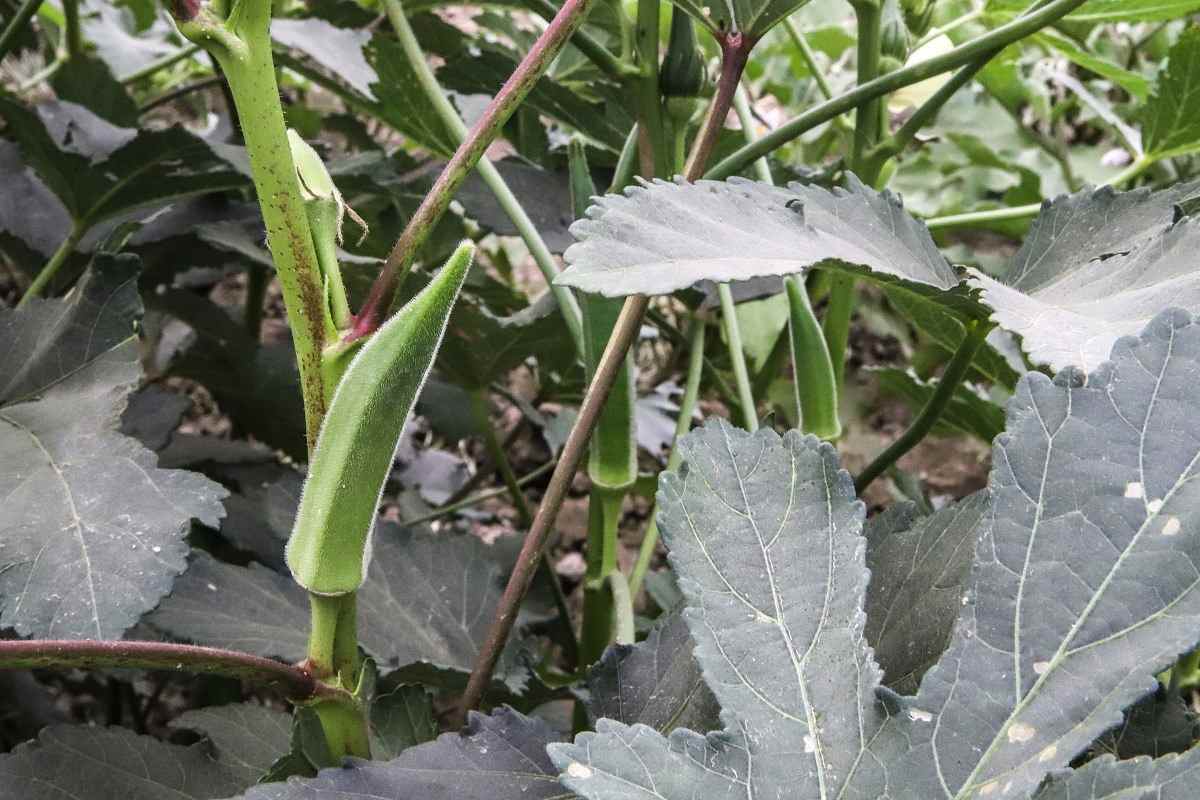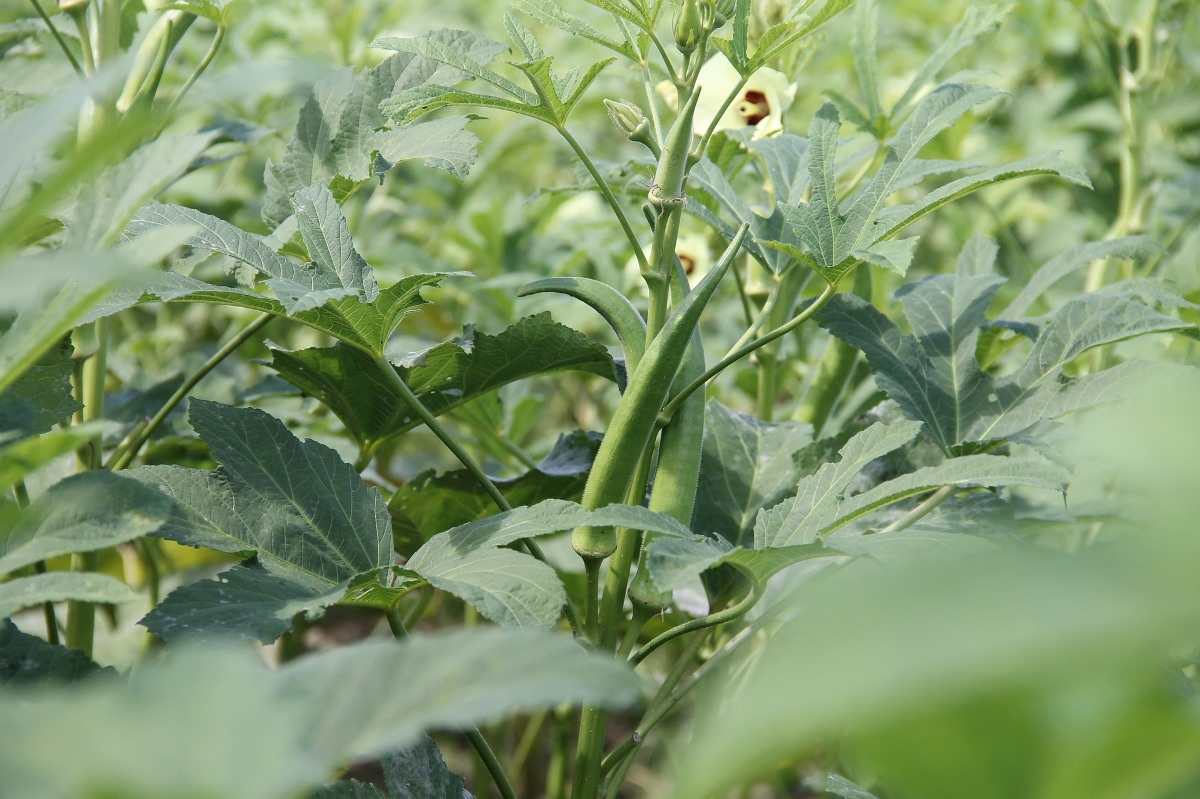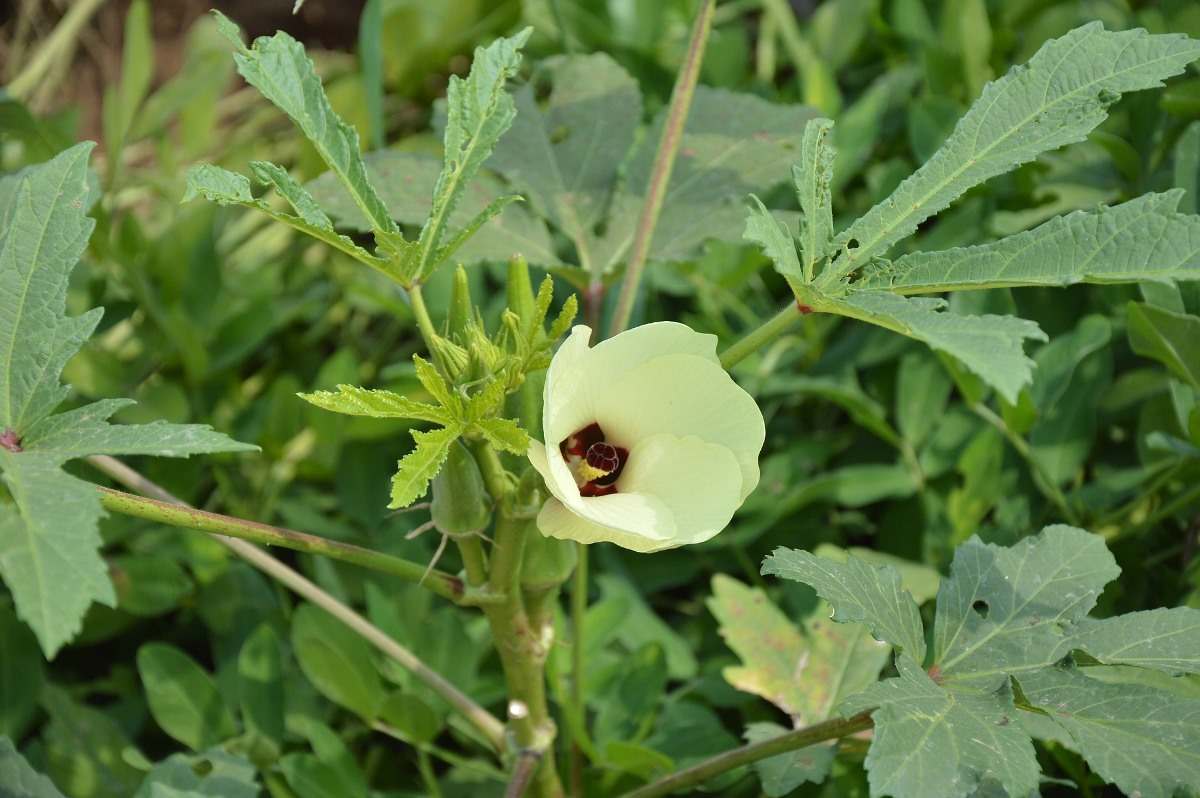Introduction to Okra Pests and Diseases
Okra or Ladies Finger is an annual plant that belongs to the Malvaceae family. Okra is mostly grown for its green tender nutritive fruits. Okra is a rich source of vitamins, calcium, protein, and other minerals. India is one of the largest producers of Okra in the world.
A Step by Step Guide to Okra Pests and Diseases, Symptoms and Control Methods

Conditions Required for Okra Farming
- Okra can be cultivated in a wide range of soil and the perfect soil for Okra cultivation is sandy loam to clay loam with rich organic matter and better drainage facility. If appropriate drainage is available it can grow well in heavy soils. The pH value of the soil should be 6.0 to 6.5. Do not cultivate crops in saline, alkaline soils also in poor drainage capacity soils. It requires humid and warm conditions for good growth. It is susceptible to low temperatures. It can be grown effectively under the temperature ranging between 25 to 30°C. The Okra plants grow taller in the rainy season compared to warm summer.
- Row to row spacing must be 45 cm is recommended and plant to plant distance is 15 to 20 cm. Okra gives slight success on transplanting and thus seed is sown directly in the soil by seed drill, hand dibbling, or behind the plough. Broadcasting is not recommended as it increases seed rate as well as causes great inconvenience in cultural operations and harvesting. Sowing on ridges ensures proper germination, decreases water requirement in spring-summer, and helps in drainage during the rainy season.
- Okra is naturally propagated from seed. Soaking seeds in water overnight before planting helps the plants to germinate. In the home garden, seeds must be sown at a depth of 2.5 cm leaving 25 to 45 cm between rows only after the soil has reached a temperature of 18°C. In commercial Okra production, seeds are planted in rows spaced 0.65 to 1.0 m apart. Okra seed is generally planted at a rate of 10 lb per acre but this quantity is vastly reduced by the use of precision planting methods. Seedlings are thinned to a final spacing of 15 to 22.5 cm when they are 4 to 6 weeks old to produce the final plant stand.
- Okra pods are generally ready for harvesting 2 months after planting. Okra pods are usually ready to harvest 4 to 6 days after flowering and pods should be harvested every 2 to 3 days when they have reached 7.6 to 15.2 cm in length. Pods can be removed from the plant by snapping from the plant or by cutting with a sharp knife.
- Among several vegetables, Okra is the most common and widely grown all over the country. One of the major limitations identified in its production is the increasing incidence of insect pests, nematodes, and diseases, sometimes resulting in substantial yield losses. Due to its tender and supple nature and its cultivation under high moisture & input regimes, Okra is more prone to pest attack and at a conservative estimate causes about 35 to 40% losses.
Fungal Infection and Insect Pests Problems in Okra
Dense clay soils with poor drainage give favorable conditions for fungal disease in Okra. Okra shows no resistance to verticillium wilt, which damages Okra roots and causes wilting and yellowing of the plant above ground level. Lower plant leaves show symptoms first, and problems move higher on the plant as the disease spreads. Leaves shrivel and die in the final stages of the infection. No chemical treatment will help Okra infected with verticillium wilt and Fungal spores overwinter in the soil, setting the stage for more problems. Solarization by heating the upper layers of soil under clear plastic sheeting decreases the incidence of verticillium wilt.

Sucking insects can attack Okra and results in loss of vigour and dying leaves. Red spider mites suck the plant’s sap from leaf surfaces, causing a speckled, yellow, or white pattern on leaves. In heavy infestations, leaves turn pale and then shrivel and brown. Aphids can also drain the plant of nourishment by sucking fluid from stems and leaves. Both adult whitefly nymphs and tobacco whiteflies feed on Okra sap and can cause plants to wilt and yellow. Checking the stems and the undersides of leaves of Okra plants must reveal any insect problems. Spraying the plants with insecticidal soap extinguishes soft-bodied pests.
Okra Pests and their Control
Shoot and fruit borer Pests of Okra
Symptoms – The insect larvae bore into the shoots during vegetative growth resulting in drooping of affected shoots.
Control – Destroy infected parts. If the pest population is high, spray Spinosad by 1ml/Ltr water or Flubendiamide by 50ml/acre added in 200 Ltr water.
Loopers
Symptoms – Large or small holes in leaves; caterpillars are easily distinguished by the way they arch their body when moving; caterpillars are pale green with a white line running down either side of their body; eggs are laid singly, generally on the lower leaf surface close to the leaf margin, and are white or pale green.
Management – Looper populations are held in check by natural enemies; an organically acceptable control method is the application of Bacillus thuringiensis which effectively kills younger larvae. Chemical sprays may damage populations of natural enemies and must be selected carefully.
Fruit borer Pests of Okra
Symptoms – Borer infestation cause toppling and death of young seedlings, withering and drying up of individual leaves and central shoot. Fruits will be damaged severely.
Control – A spray of carbaryl or endosulfan or deltamethrin is effective for the control of borer. Clean cultivation and summer ploughing is also helpful in reducing pest infestation.
Whitefly Pests of Okra Crop
Symptoms – The insect does not cause considerable damage to the crop but acts as a vector to transmit the yellow vein mosaic virus disease.
Control
- Follow good crop rotation with crops.
- Use of biocontrol tactics by releasing predators.
- Spray the crop either Malathion (0.1%) or monocrotophos (0.05%) or dimethoate (0.03%) starting from the attack of insect.
Aphid Pests in Okra Farming
Symptoms – In severe infestation, they cause curling and deformation of young leaves. They secrete honeydew like substance and black, sooty mould is developed on affected parts.
Control – Destroy affected parts as soon as an infestation is noticed. 20 to 35 days after sowing, apply Dimethoate 300 ml/150Ltr of water, and repeat if necessary.
Shoot and fruit borer Pests of Okra
Symptoms – Larvae bore into the fruits which become unmarketable and cannot be used for human consumption. The larvae bore into the growing shoot initially and fruits at a later stage. It is the major pest of Okra.
Control
- Good management practices, first adopt the preventive tactics followed by curative tactics.
- Summer ploughing and clean cultivation are also helpful in reducing the pest population.
- Follow the crop rotation excluding cotton and hollyhock.
- Regularly remove the attacked fruits and bury them deep into the soil.
- Spray carbaryl (0.2%) or cypermethrin (0.05 %) at fortnight interval.
Leafhopper Pests of Okra Plants
Symptoms – Leafhopper pest attacks the crop at its early stage of growth. Small, greenish leafhoppers; adults and nymphs are found on the bottom side of the leaves. The nymphs and the adults suck the cell sap from the leaves. Due to this, the leaves curl upwards along the margins and have a burnt look that extends over the entire leaf area. The affected plants show stunted growth.
Control – Soil application of Carbofuran 3 G at the time of sowing effectively controls the pest. Spraying the crop with Monocrotophos (0.05%) at periodical intervals starting with the appearance of the pest provides good control.
Root-knot nematode Pests of Okra Plant
Symptoms – The root-knot nematode enters the roots causing characteristic root knots or galls. The aerial symptoms consist mostly of stunted plant growth and yellowing of leaves. Nematode attack in the seedling stage leads to pre- and postemergence damage resulting in reduced crop stand.
Control – Cultural control methods such as rotation with non-host crops for example cereals, fallowing, and deep ploughing 2 to 3 times in summer months is suggested. Application of Nemagon with irrigation before sowing is suggested to protect the seedling in its early stage of plant growth.
Okra Diseases and their Control
Yellow vein mosaic virus
Symptoms – The main symptom of this disease is a homogenous interwoven network of yellow veins. The growth of the plant becomes affected and they remain stunted. Fruits also give a yellow appearance with a tough texture and small size. It causes yield losses of up to 80-90%. This disease is spread due to whitefly and leafhopper.
Control
- Use resistant varieties for cultivation. Take away and destroyed diseased plants from the field. For controlling the whitefly, take spray of Dimethoate by 300ml/200Ltr of water.
- Wilt the plant remains stunted and gave a wilted and yellowish appearance. The stem turns dark near to the soil surface and lastly the entire plant wilts. Okra must not be rotated with crops like eggplant, tomato, and chilli. It must not be grown in the infested field for 3 years. Use seed from healthy plants only and treat the seed with 3 g of Thiram or Captain per kg seed before sowing
Powdery mildew
Symptoms – White powdery growth is detected on young leaves and also on fruits. In severe conditions, you can observe premature defoliation and fruit drop. Fruit quality gets deteriorated and remains small in size.
Control – If you observed infestation in the field, take a spray of Wettable Sulphur 25gm/10Ltr of water, 4times at 10 days interval, or Tridemorph by 5ml or Penconazol by 10ml/10Ltr of water for 4 times with a 10 days interval.
Yellow-vein mosaic
Symptoms – The characteristic symptom of this disease is a homogenous interwoven network of yellow veins, enclosing islands of green tissues within. It causes yield losses of nearly 80 to 90%.
Control – 4 to 5 foliar sprayings of Dimethoate (0.05%) or Oxydemeton methyl (0.02%) at the 10-day interval, followed by 1 or 2 sprays of mineral oil (2%). Apply Carbofuran @ 1kg/ha at the time of sowing. Use resistant varieties Arka Anamika and Arka Abhay.
Damping-off
Symptoms – High humidity, cloudy weather, overcrowding, and wet soils mainly favour the development of damping-off, and damping-off kills seedlings before or soon after they emerge. Infection before seedling emergence results in lower germination. If the decay is after seedlings emergence, they fall over or die which is referred to as “damp-off.” The destructiveness of the disease based on environmental conditions and the amount of pathogen in the soil. Seedlings that emerge develop a lesion near where the tender stem in contacts with the soil surface and the tissues beneath the lesion become soft due to which the seedlings collapse.
Control – Excessive irrigation should be avoided to reduce humidity around the plants. Seed treatment with antagonist fungal culture of Thiram (2 to 3 g /kg of seed) or Trichoderma viride (3 to 4 g/kg of seed) and soil drenching with Bavistin (0.1%) affords protection against the disease. The field must be frequently inspected for the disease-affected seedlings. Such seedlings must be removed and destroyed.
Root rot
Symptoms – Infected roots become dark brown in colour and plant die in case of severe infestation.
Control – Follow crop rotation and avoid monocropping. Before sowing the seed, do seed treatment with Carbendazim by 2.5gram per kg of seed. Drench the soil with Carbendazim solution by 1gm/Ltr of water.
Powdery mildew
Symptoms – The disease is found mostly on the stems and older leaves of plants. Yields of many of the infected vegetables are decreased due to premature foliage loss. Increased humidity can increase the severity of the disease, and infection is higher during periods of heavy dew. The disease symptoms appear as subtle, round, small, whitish spots on leaves and sometimes stems. Severely infected leaves become yellow, and then become dry and brown.
Control – Healthy leaves and stems are less prone to infection. Plants under nutritional stress in maximum cases will develop powdery mildew much sooner than plants the same age grown under a good nutritional program. Hence the plant must be well manured and the application of fertilizers must be done based on standard references. Application of or Sulphur (0.2%) or at an interval of a 1-week interval efficiently controls the disease.
You should not miss this: Hydroponic Spinach Farming.
Biological Controls and Natural Insecticides for Okra Pests and Diseases
Natural predators abound if they are not killed by pesticides. Some natural predators of Okra pests include lady beetles, lacewings, spiders, and parasitic wasps. Clover, parsley, and alyssum will help attract beneficial insects to your garden. One more biological weapon to protect your Okra crop is Bacillus thuringiensis, also called Bt, a natural bacteria that attacks and kills several insects.

Insecticidal soap is a natural insecticide that kills many of the pests on your Okra. You can buy horticultural oils and insecticidal soaps at garden centers. Neem oil is a readily available choice. Not all areas environmentally friendly as others, as some are made with petroleum-based oils as an alternative to plant-based oils. To make a homemade pesticide for Okra, mix 2 tablespoons of dye- and fragrance-free vegetable-based liquid soap, such as castile soap, with 1 gallon of water and spray your Okra.
In case if you like this: Fall Vegetable Gardening Tips, Ideas, And Techniques.
I want start farming
What can I do with my okra, I just plants it now and it grows but some things are cutting the stems.
I HAVE A ONE MONTH OKRO WHICH STARTED DYING . PLEASE WHAT SHOULD I DO TO PREVENT IT
Interesting for educational and practical purposes.